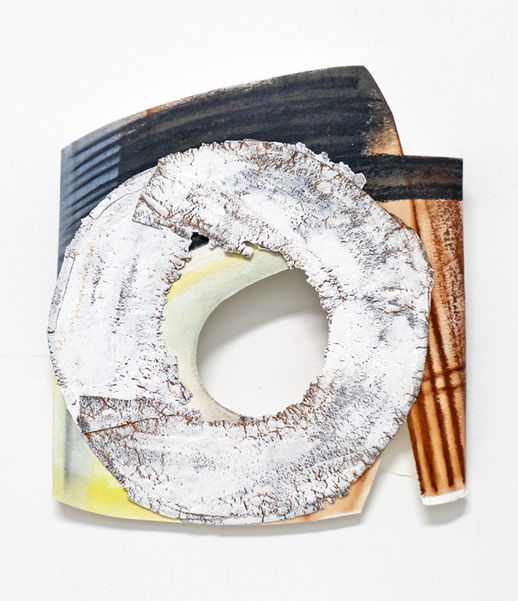FRAMEWORK
Each artist presented in this exhibition has a unique way of bracketing their work, in a repoussoir style that directs our attention back onto the subject or abstract element. This technique adds a more focused spatial depth between the dissonance created within the different textures, colors, and subjects.
There is also a sense of Romanticism in these artists' works, emphasized by intense emotions and aesthetic experience. Loneliness is an essential Romantic viewpoint that is prevalent in the abstract elements and in the figures in these works, as we are, in reality, all in isolation and disconnected, searching for alternative connections, as these works do.
Please email Laura Horne at tussleprojects@gmail.com for any press or price inquiries.
Rachel MacFarlane (New York)is a visual artist. She creates paper models as references for paintings that explore the conditions of place. Her recent work focuses on landscape environments. Through recalling memories she fabricates new scenes. Her painted spaces sit at the crux between observed and imagined place. Critic Mitch Speed describes her particularities by saying,
“Despite this resonance with past painting, MacFarlane's models and pictures cling assiduously to our present moment: or at least to the subjectivities that live in it, formed by decades of evolving digital entertainment — so many video game environments and animated film worlds.
Stylistically, the internal dialectic of her work comprises these referents, and the outdated modality of painting, mixing landscape and still life."






Milena Roglic's (Toronto)current research deals with the three-dimensional investigation of materials in parallel with the context of urbanism and contemporary culture. Her studio time is devoted to experimenting with approaches to painting, mixed media, and relief techniques. In recent work, Roglic incorporates new and repurposed materials such as paint, paper, wood, epoxy paste, scrap metal, foam core board, and styrofoam.
Roglic applies fundamental principles of color, texture, and form as a way to relay day-to-day experiences from the vibrancy and disarray of the built environment. Roglic collects architectural and industrial motifs, textures, and ephemera that she can instill into the work.
The city, its structures, and inhabitants become the driving influence in her research and interest in the philosophical and physical effects: How do we view ourselves concerning a shifting environment? How do we navigate space and interact
with our surroundings?
Roglic aims to challenge traditional notions of painting and examine ways to renew and
reconstruct a form or image; to push the physical properties by shifting materials and
transforming subjects through space, surface, and format. Roglic is interested in exploring new imagery and structural forms by merging painting and multidimensional elements into her art practice.

Noelle Velez's (New York) work centers around overstimulation and specializes in dreamlike narratives. Velez’s works encompass both the changeable intensity and specificity of daily life and the scintillating volatility of the subconscious.


Jane Westrick's (Jersey City, NJ)paintings explore performances of gender within rigid structures. In a recent series, I split my compositions into sections of paper and zones of color, arranged with edges touching in a border and center motif. Depicted from different vantage points are the locations of the gymnastics arena, soccer field, and ballroom dance floor. These are highly-gendered spaces, and sites where gender norms are most challenged.
Within these spaces, female and androgynous dancers and athletes respond to unity-enforcing structures. Acts of rebellion, attempts at escape, and hiding through assimilation are present in adjacent narrative sections. By presenting conflicting orientations towards a seemingly unified space, my works resist assumptions, instead encouraging the viewer to take up different positions and find complexity among the parts. The large abstract centers of the paintings serve as spaces for contemplation; they are mirrors, portals, and walls. The relation to architectural spaces encourages the viewer to consider the space they occupy and the ways in which the structures we inhabit can affect our behavior.















